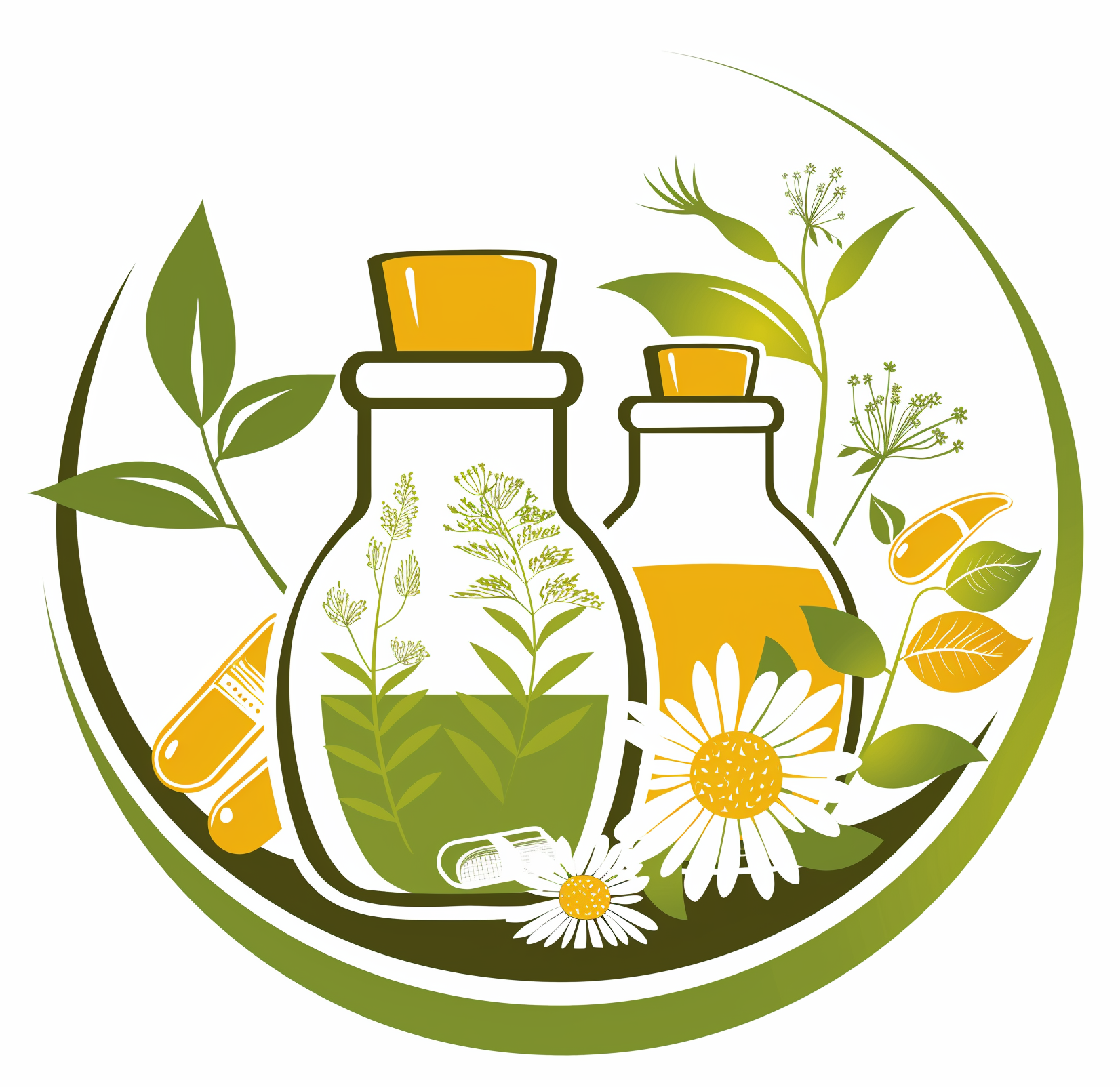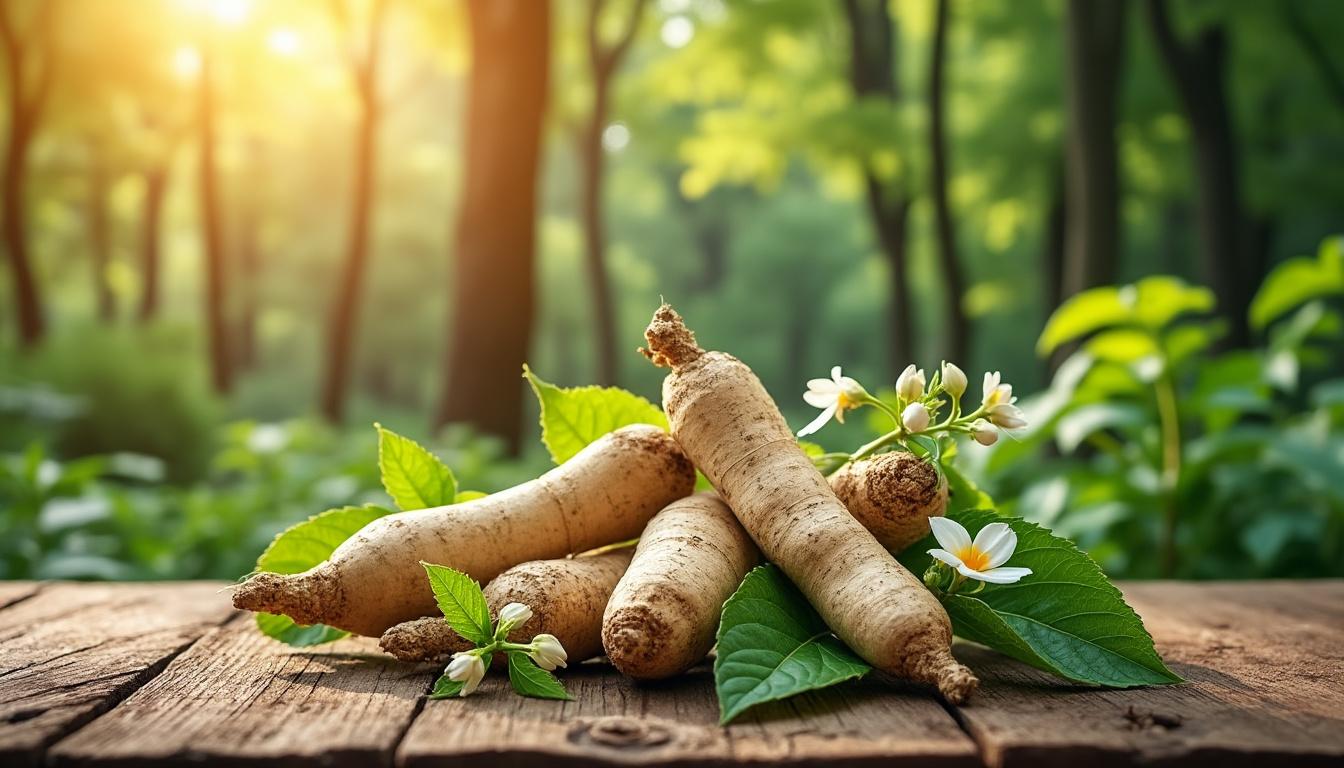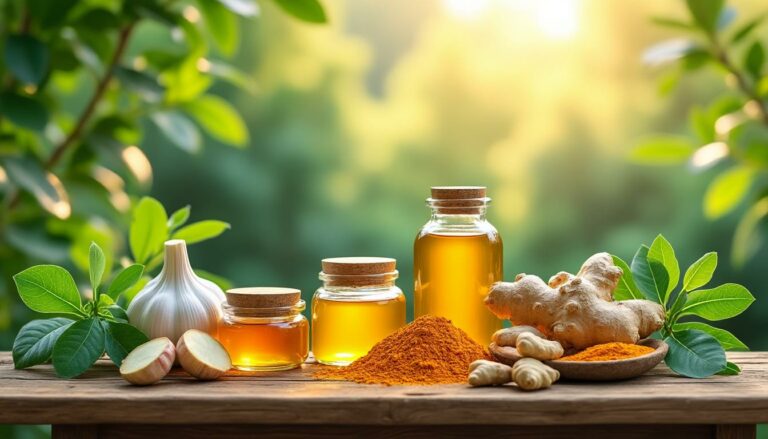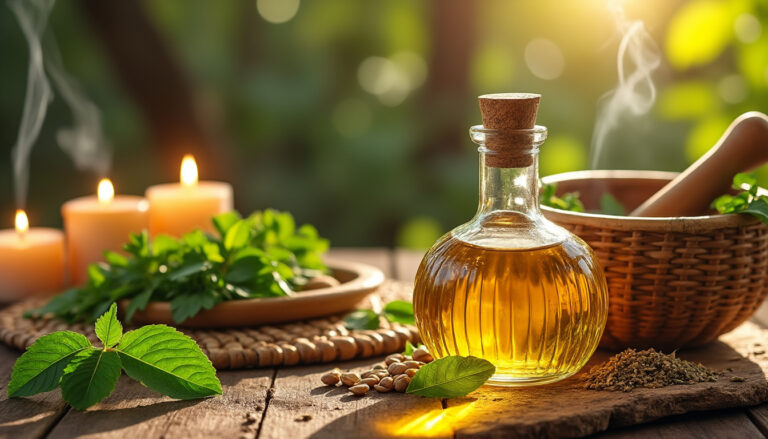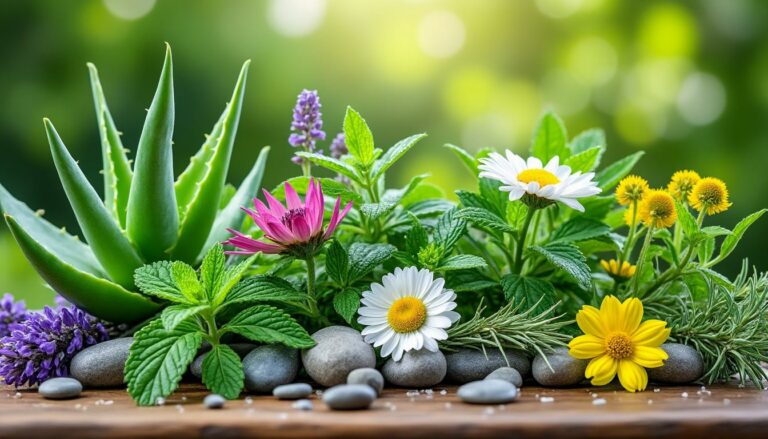What is ashwagandha? Understanding its stress-relieving properties
Stress may feel like an unavoidable side-effect of modern life, yet its steady drip of cortisol quietly wears down immunity, mood, and focus.
The longer the body stays locked in “fight-or-flight,” the higher the toll: restless nights, anxious thoughts, and a nervous system stuck on high alert. Left unchecked, even small daily challenges can snowball into burnout.
Good news—you can invite more calm without sedatives or complicated routines. Ashwagandha (pronounced ash-wah-GAN-duh) has been balancing stress hormones in Ayurvedic households for centuries, and today’s research finally explains why. In the next few minutes, you’ll discover how this root steadies cortisol, the exact doses that work in trials, and simple tips for brewing or capsuling it at home.
Meet Ashwagandha: the adaptogen behind calmer days
Let’s break this down in simple terms. An adaptogen is a plant compound that helps your body adapt to stress rather than bulldozing symptoms. Withania somnifera, better known as Ashwagandha, is one of the most researched adaptogens today.
- 🌱 Origins: Grows wild from India to the Mediterranean, thriving in dry, sandy soil.
- 🧪 Main actives: Withanolides—natural steroids that modulate cortisol and calm the nervous system.
- ⏳ Historical use: Mentioned in 6,000-year-old Ayurvedic texts as a tonic for “strength and clear mind.”
- 🔍 Modern spotlight: U.S. sales projected to top $2.5 billion by 2031, according to Allied Market Research.
| 🌱 Botanical Snapshot | Traditional Insight | 2025 Research Update |
|---|---|---|
| Family: Solanaceae (nightshade) | Classed as “Rasayana” (rejuvenator) in Ayurveda | 66 % average drop in cortisol in 60-day trials |
| Part used: Root & leaf | Often mixed with warm milk & honey at night | 600 mg/day linked to better sleep quality ✔️ |
| Flavor: Earthy, slightly bitter | Given to budding martial artists for stamina | Raises VO₂ max by up to 9.5 % in athletes 🏃♂️ |
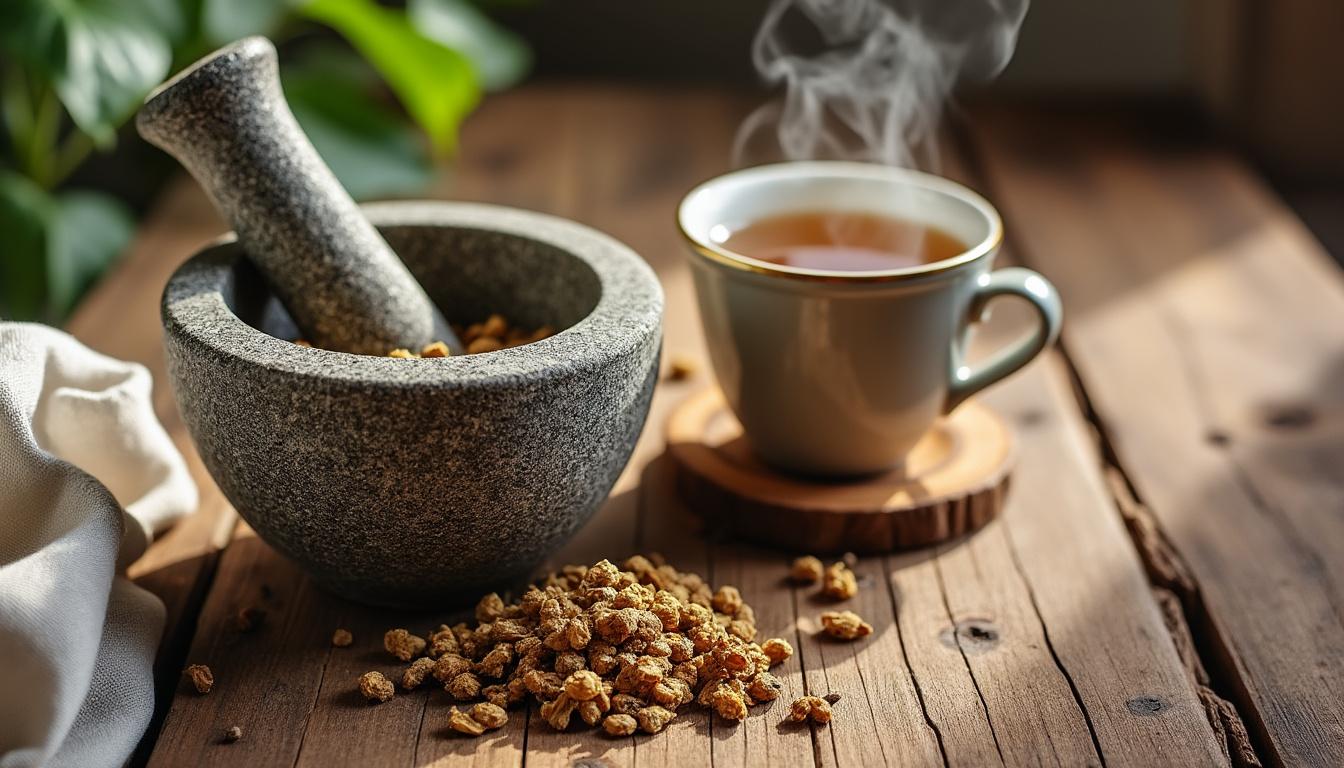
Why homesteaders and minimalists keep it on hand
If you’re building a medicine chest from scratch, this herb checks multiple boxes:
- 🛡️ Dual action—calms nerves without sedation.
- 🔄 Versatile prep—capsule, tincture, latte, or backyard tincture.
- 📚 Evidence-backed—over 70 peer-reviewed papers since 2020 alone.
Curious about other multipurpose botanicals? Explore the full list at Self Reliant Wellness for more ideas.
How Ashwagandha lowers cortisol and soothes your nervous system
Many natural wellness seekers turn to this remedy because chronic stress hijacks everything from thyroid function to mental clarity. Here’s how the root pushes back.
- 🧬 HPA-axis balancer: Signals the hypothalamus and pituitary to dial down cortisol surges.
- 💤 GABA mimic: Binds gently to calm-inducing receptors, promoting deeper sleep without grogginess.
- 🩸 Antioxidant guard: Neutralizes free radicals, reducing brain fog and cellular fatigue.
| Study (Year) | Participants | Dosage & Extract | Key Outcome 🎯 |
|---|---|---|---|
| 2023 (Medicine) | 54 adults | 500 mg/day root extract | ↓ Cortisol 28 %, ↑ Serotonin 15 % |
| 2024 (Randomized) | 60 adults | 60–120 mg Shoden® | 59 % drop in anxiety scale |
| 2025 (Sleep Meta-analysis) | 400 combined | ≥ 600 mg for 8 weeks | Improved sleep latency & depth |
Notice the wide dosing range. Low-milligram Shoden and high-milligram KSM-66 extracts both worked, suggesting potency trumps sheer weight.
For a broader context on stress biology, the Holistic Health Overview dives deeper into circadian rhythm, breathwork, and diet synergy.
Real-life snapshot: Jake’s off-grid greenhouse 🏡
Jake, a 38-year-old tiny-house builder in Oregon, noticed midday crashes while milling lumber. After introducing 300 mg of homemade root powder with his lunchtime stew, his smartwatch tracked a 12 % heart-rate variability bump—a practical sign of lower stress load. Two months in, he now caps his own tincture using guidance from our Plant Healing Guide.
This isn’t just folk wisdom—science backs it up too. Ready to test your own response? Keep reading.
Practical guide: choosing, dosing, and pairing Ashwagandha for best results
The supplement aisle can feel like a maze, so here’s a clear roadmap.
- 📦 Whole-root powder—DIY friendly; ideal for teas and cooking.
- 💊 Standardized capsules—predictable withanolide content, easy travel option.
- 🍯 Liquid extracts—fast absorption, perfect for bedtime dropper doses.
| Brand 👀 | Extract Type | Withanolide % | Best For | Buy Link |
|---|---|---|---|---|
| Gaia Herbs | Root liquid phyto-caps | 5 % | Daily stress balance | iHerb |
| Herb Pharm | Organic tincture | 4 % | Quick bedtime drops | iHerb |
| NOW Foods | KSM-66 powder caps | 6 % | Workout recovery | iHerb |
| Sun Potion | Wild-crafted bulk powder | 3 % | Kitchen lattes | iHerb |
| Source Naturals | Tablet blend | 2 % | Budget starter | iHerb |
| Nature’s Way | Root/leaf vegan caps | 2.5 % | Travel kit | iHerb |
Safe & effective dosing tips
- 🕰️ Start with 300–500 mg after breakfast for two weeks.
- 📈 Track mood, sleep, and resting heart rate to gauge response.
- 🍳 Take with healthy fat (ghee, coconut oil) to boost absorption.
- 🤝 Pair with magnesium or tulsi tea for a full adaptogenic stack.
- ⚠️ Check interactions if on blood thinners, antidepressants, or thyroid meds.
Need a refresher on herbal safety? Our Herbal Medicine hub covers contraindications and sourcing ethics—critical knowledge for anyone pursuing herbalism in 2025 and beyond.
Action Step: Choose one form above, set a six-week experiment window, and log changes in a simple journal or spreadsheet. Consistency—not megadosing—unlocks the full adaptogenic arc.
Round-the-clock demands don’t have to own the day. By weaving Ashwagandha into meals or nightly rituals, you’ll give your nervous system the tools it needs to self-regulate—no prescription required.
FAQ: quick answers for busy readers
- 🧐 How long before I feel calmer?
Most notice subtler stress relief within 7–14 days; sleep and endurance gains often surface by week 6. - 🕗 Can I take it at night?
Yes. A 300 mg dose 30 minutes before bed pairs well with chamomile for deeper sleep. - 💪 Is it safe during workouts?
Studies show improved VO₂ max and recovery. Take post-exercise with protein for best effect. - 🤰 Is it pregnancy-safe?
Current research is insufficient; expectant or nursing individuals should avoid it unless advised otherwise. - 🔄 Can I cycle off?
Many users follow an 8-week-on, 2-week-off rhythm to keep receptors responsive, but no dependency has been documented.
